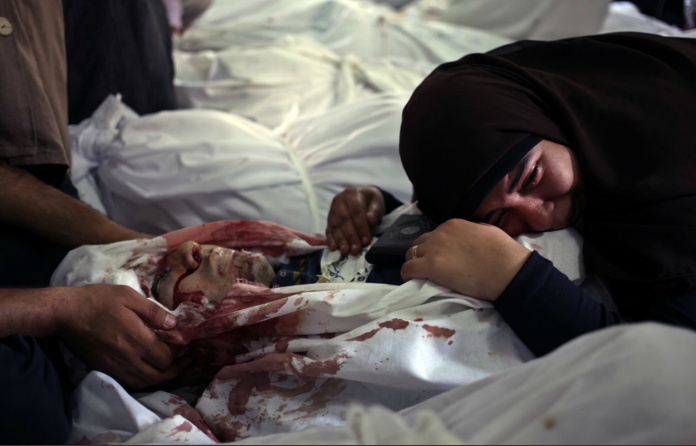Photographs of violent death show up in the mainstream media slideshows with some degree of regularity. Not every single day, to be sure, but often enough to identify some sort of genre. Such images don’t always include mourners, as does this one, which amplify the pain and suffering by extending it to the living, here a family member in grief, but they almost always feature the bruised and bloody body, often gruesomely so. This image comes from Cairo, where the government recently cracked down on supporters of the deposed president, Mohamed Morsi, but it could have been almost anywhere in the world, from Afghanistan to Chile, to Syria, Tibet and beyond.
The key phrase in that last sentence is “almost anywhere in the world,” because it is highly unlikely—approaching certainty—that we would ever see such a photograph taken in the United States and on display in the mainstream media. Going back as far as the 1950s one of the very few exceptions I can think of is the photograph of the tortured and mangled body of Emmett Till, and that horrific image was put on display because his outraged mother insisted that the world bear witness to his lynching. Another exception might be one of the photographs that appeared at the time of the slaying of students by the National Guard at Kent State University in 1970, though even there the most vividly gruesome images (here and here) received very little sustained attention, while a less gruesome image went on to achieve iconic status. And there maybe other exceptions, though I am hard pressed to identify them, but in any case they are so rare as to stand as proof to the rule of the convention.
The obvious question to ask is why? Why do we encounter such photographs from other parts of the world with regularity in the mainstream media, but not from our own world? This is not an easy question to answer. Perhaps fewer such pictures are actually taken in the US, but that only begs the question, for while there might not be the same degree of concentrated violence in the US as elsewhere, there are surely enough occasions where such photographs could be taken and shown, but are not. Or perhaps it is that we privilege the privacy of the individual in our own culture, but don’t allow privacy concerns to impede the ways in which we represent and depict alien cultures. Or perhaps it is simply a perverse voyeurism that promotes our own culture over those we might characterize as “others.” And there maybe other possibilities at well.
However we answer this first question, there is a second and, perhaps, more important question to ask: Given the regularity and almost ubiquity of such images in the mainstream press, how is it that we see them without actually noticing them, viewing them all too frequently with a tired glance as we flip from one image to the next. Just another photograph. Some are no doubt content to answer this question with the old sop of “compassion fatigue,” but if that were true it is unlikely that photographers would keep taking the images or that editors would keep posting them with regularity, especially in slideshows where they are often surrounded with other images that don’t clearly address or inflect the violence that was perpetrated. There has to be something else going on here. I don’t know the answer, but the regular (commodified?) presence of such images of people from distant lands is surely a provocation to consider how it reflects our values and desires as much, if not more, than those of the people and countries being depicted.
Photo Credit: Khalil Hamra/AP

Photos of blood and violence that get published from other countries usually depict some shade of brown others- their lives cheaper, more expendable, not quite up to White American standards by any stretch of the imagination. They remind us that America is still separate and superior, and that violence is inherent within brown skins world over.